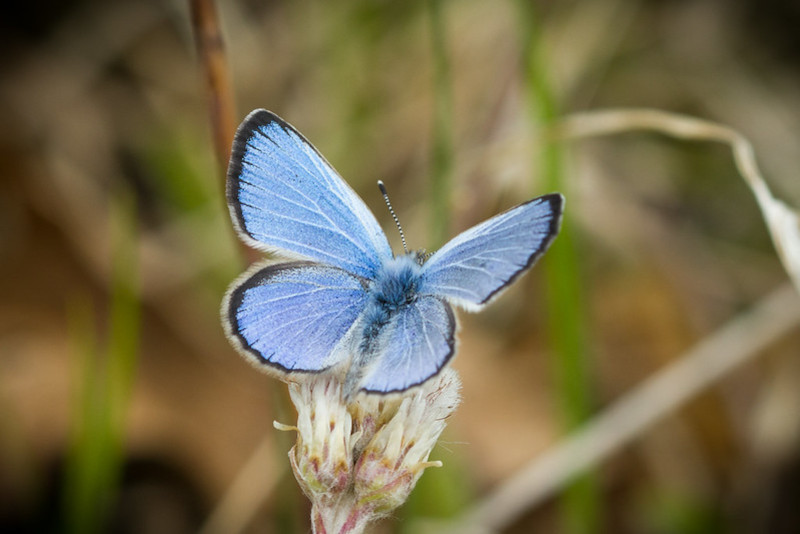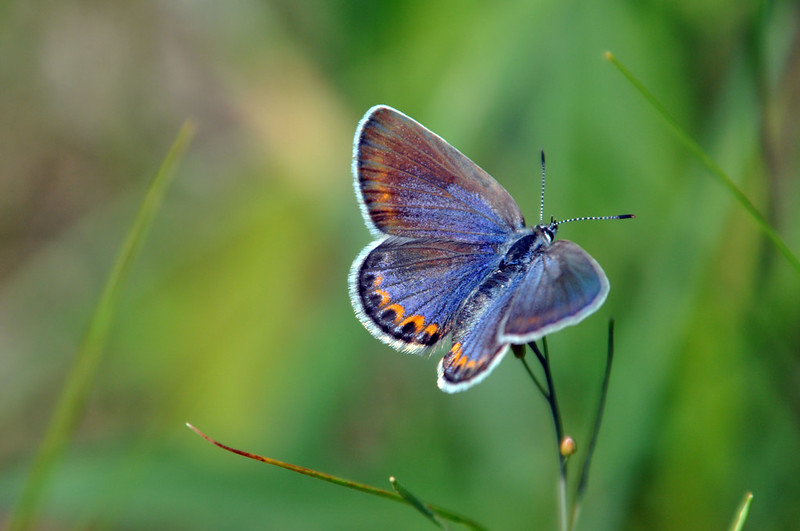
Karner Blue Butterfly Facts
- The Karner Blue Butterfly remains a highly endangered species of Lepidoptera which was originally endemic to specific regions of the Northern Hemisphere.
- The butterfly is also now most likely extinct in Canada, and only relatively small populations of this insect perhaps exist in other portions of its original range.
- The Necedah National Wildlife Refuge in the state of Wisconsin possesses the largest known population of the insect.
- Localized conservation efforts currently underway appear to be successfully increasing their numbers slightly. We sure hope this trend continues.
Karner Blue Butterfly Physical Description
Among the Karner Blue Butterfly, males and females possess rather distinctly different appearances. Yet both possess wingspans of roughly 1 in (2.5 cm).
The upper side of the wings of the male is typically dark blue or a silvery blue, and black margins frame the whole wing. The female is predominantly a grayish brown in color, and this is especially true on the outer portions of the wings.
She will also present irregular bands of orange crescent shapes within the black margins.
Both genders of the butterfly are mostly gray on the underside of the wings. Both also present orange crescents along the edges of the underside of both wings.
- Kingdom: Animalia
- Phylum: Arthropoda
- Class: Insecta
- Order: Lepidoptera
- Family: Lycaenidae
- Genus: Plebejus
- Species: P. melissa
Karner Blue Butterfly Distribution, Habitat, and Ecology
The gorgeous and rather surprising Karner Blue Butterfly once lived throughout Canada and the United States. Sadly, it now only exists in portions of the United States.
The concentrations also appear in only six states: New York, Michigan, Indiana, Wisconsin, Minnesota, and Indiana, in North America.
In general, the Karner Blue Butterfly prefers to inhabit pine barrens and oak savannas. However, males and females appear to have totally different specific preferences in this regard. The males are fond of rather broad, sunny areas while females like the cooler shaded spaces.
The species has developed a dietary dependency with a single, specific plant species, the wild lupine. The adult butterfly will also feed on nectar from a variety of sources. Yet, their larvae feed exclusively on wild lupine.
Unfortunately, the rapid decline of this plant within its territory is also a chief contributor to the butterfly’s decline.
Check out our other articles on Mitchell’s Satyr Butterfly, Sunset Moth, Rosy Maple Moth, White Ermine, Question Mark Butterfly











Informative article, though the second image above the “Karner Blue Butterfly Physical Description” title is not a Karner Blue Butterfly. It is likely an eastern tailed blue butterfly. It is a look-alike butterfly, notice the two little tails at the bottom of the wings. Karner blue butterflies do not have these little tails on their hindwings.
Thank you so much for letting us know 🙂 Much appreciated!